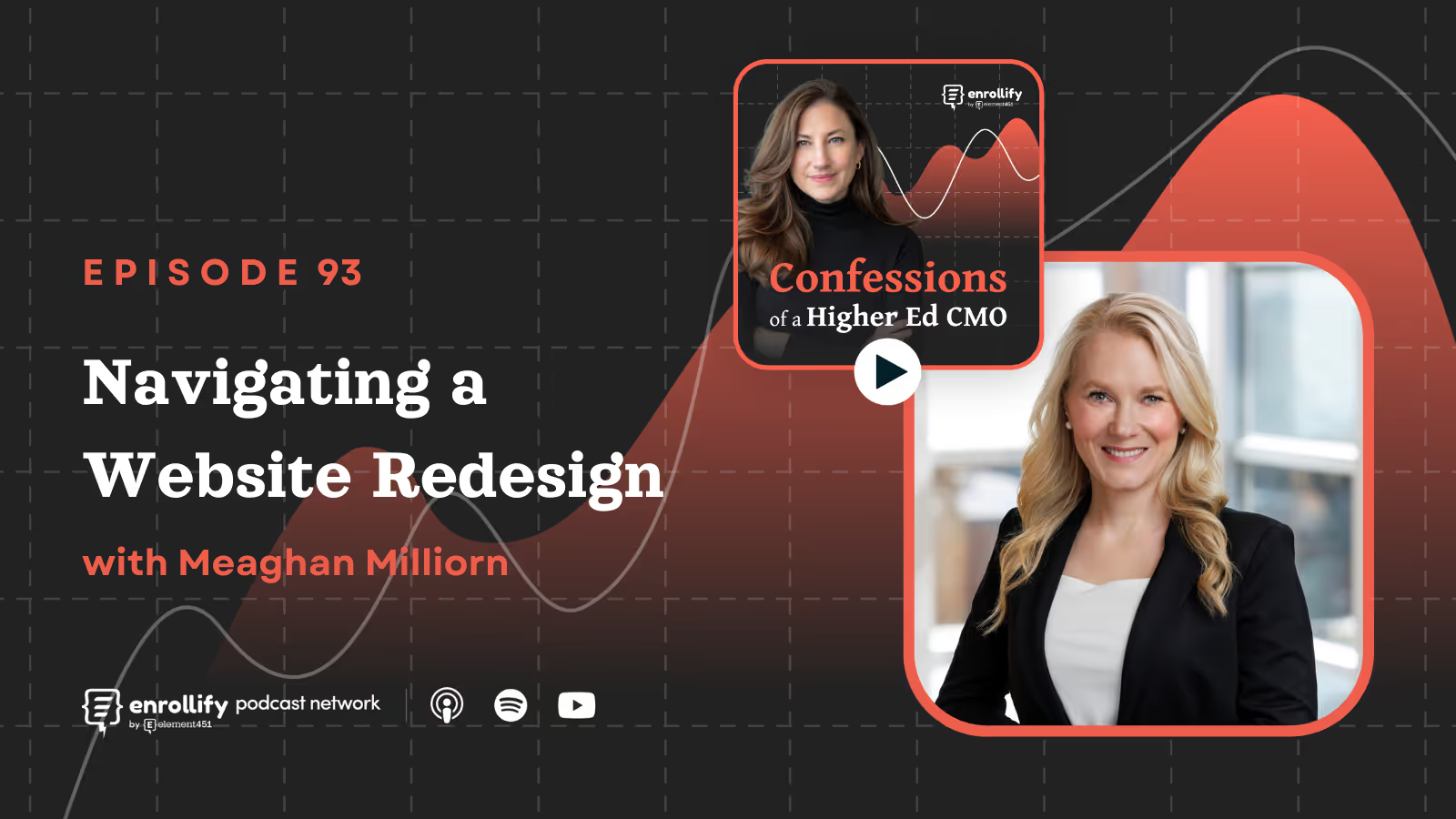About the Episode
Got a story to tell? An innovative idea to share? Fill out our guest nomination form and let's chat!
About the Episode:
Jaime Hunt sits down with Brittney Westbrook to discuss the nuances of working with graphic designers and managing creative teams. They dive into the challenges of balancing creative freedom with strategic goals, the importance of giving actionable feedback, and how marketing leaders can foster stronger partnerships with designers. Whether you’re leading a creative team or collaborating with designers on marketing projects, this episode is packed with insights on how to improve workflows, enhance communication, and ultimately create more effective marketing materials.
Key Takeaways
- Designers are strategic communicators, not just decorators. They translate complex messages into compelling visuals that align with marketing goals.
- A well-structured creative brief is essential. It should outline objectives, audience, required content, and deliverables while still allowing room for creative autonomy.
- Collaboration is key. Designers should be involved in project kickoff meetings and work closely with writers and strategists to ensure alignment.
- Provide specific and actionable feedback. Avoid vague statements like "make it pop" and instead focus on objectives, audience needs, and functionality.
- Respect designers' time and creative process. Avoid last-minute changes and ensure they have the bandwidth to do their best work.
- Break down silos within marketing teams. Encourage cross-functional collaboration to create more cohesive and impactful campaigns.
- Higher ed marketing should look beyond higher ed for inspiration. Drawing from consumer brands and other industries can help create fresher, more engaging designs.
Why Do Designers Need a Creative Brief?
Many marketing teams push back on creative briefs, seeing them as an unnecessary extra step. But as Brittney explains, a creative brief doesn’t have to be intimidating. It can be as simple as a well-organized email that outlines key details: the project’s objectives, target audience, timeline, required elements, and deliverables.
Having a structured brief prevents last-minute surprises and ensures designers understand the strategy behind the project. For ongoing campaigns, creating an overarching creative brief that can be referenced for multiple pieces can save time while maintaining consistency.
How Can Marketers Give Better Feedback to Designers?
One of the biggest frustrations designers face is vague or unhelpful feedback. Instead of saying, “I don’t like it,” try to pinpoint why: Does the design meet the project’s goals? Does it align with the intended audience? Is there a functional issue with readability or layout?
Brittney suggests starting with what works before addressing areas that need improvement. Ask open-ended questions about design choices, rather than dictating specific changes. And most importantly, remember that designers are professionals—trust their expertise while providing clear, strategic guidance.
What Are the Unique Challenges of Design in Higher Ed?
Unlike corporate brands where strict brand guidelines are universally followed, higher ed institutions often struggle with brand consistency. Departments may push for unique identities that deviate from institutional branding, creating tension between designers and internal stakeholders.
Marketing leaders play a crucial role in navigating these challenges. They should advocate for brand consistency while ensuring departments understand the value of strategic design. Additionally, fostering collaboration between designers and other communicators, rather than treating them as an “end-of-the-line” production team, helps prevent misalignment.
How Can Marketing Leaders Support Creative Teams?
Creativity doesn’t happen in a vacuum—designers need time and space to think, experiment, and refine their work. Marketing leaders should:
- Protect their designers’ time by minimizing unnecessary meetings and last-minute requests.
- Encourage cross-team collaboration from the start of a project, rather than operating in a handoff-based workflow.
- Recognize the strategic role of design in marketing and advocate for designers as key contributors to messaging and storytelling.
By treating designers as partners rather than production workers, marketing leaders can create a culture where creativity thrives and projects are more successful.
To hear this interview and many more like it, subscribe on Apple Podcasts, Spotify, or our website, or search for Confessions of a Higher Ed CMO in your favorite podcast player.
Connect With Our Host:
Jaime Hunt
https://twitter.com/JaimeHuntIMC
About The Enrollify Podcast Network:
Confessions of a Higher Ed CMO is a part of the Enrollify Podcast Network. If you like this podcast, chances are you’ll like other Enrollify shows too!
Some of our favorites include Talking Tactics and Higher Ed Pulse.
Enrollify is produced by Element451 — the next-generation AI student engagement platform helping institutions create meaningful and personalized interactions with students. Learn more at element451.com.
Attend the 2025 Engage Summit!
The Engage Summit is the premier conference for forward-thinking leaders and practitioners dedicated to exploring the transformative power of AI in education.
Explore the strategies and tools to step into the next generation of student engagement, supercharged by AI. You'll leave ready to deliver the most personalized digital engagement experience every step of the way.
👉🏻 Register now to secure your spot in Charlotte, NC, on June 24-25, 2025!















